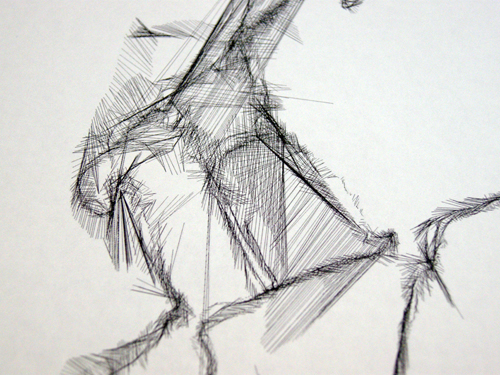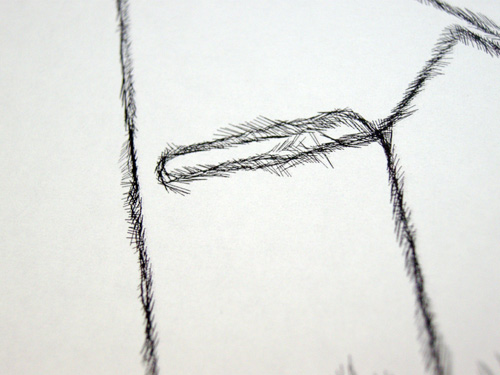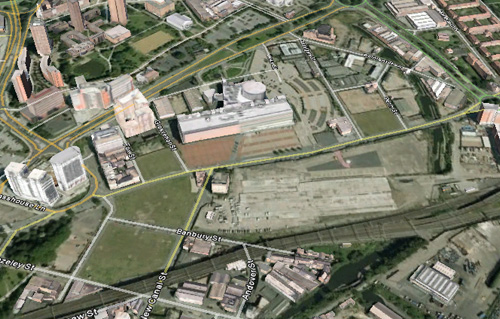19,264 seconds of qualitative and quantitative data (Curzon Street, 2010)
What started as an exploration into my relationship as an artist to a proposed cultural quarter has expanded to also include a significant amount of sustained investigation into witnessing and documenting the change in that urban landscape.
Last year my focus was on the perimeter of Birmingham City Council’s regeneration area. Since walking and gathering the GPS data for Uncertain Eastside and organising the Walk and Talk event (in which we gathered lots of visual and anecdotal data) I’ve been increasingly aware of buildings going up and coming down in the area around Curzon Street and Millennium Point.
The Google Earth view of the area (with imagery that seems to be from 2007) is already drastically out of date, but it gives a rough idea about the range of contrasting terrain there now.
As well as spending hours walking all the streets in the zone I’ve selected, concentrating on paying attention to the details of the spaces, I’ve been collecting and processing GPS data to use as a measure of how developed the streets are. I will repeat this over the years to come as a way of logging the changes taking place on both macro and micro scales.
At the bottom left of the image above there is a relatively green area: old factory plots that have now turned to grassy wastelands and the park on the corner at the top of Fazeley Street.

Bartholomew Street, now closed to traffic and without any buildings around it. The bottom right corner shows where my path passes under the railway arches at the corner of Fazeley and New Canal Streets
Here the GPS data is fairly consistent. Water-heavy buddleia bushes overhanging the pavements on closed roads induce a few wobbles and railway viaducts cause momentary loss of signal, but on the whole the open terrain doesn’t interfere much with calculations of position.
Contrast this with the data gathered from around the various Further and Higher Education buildings on and around Fox Street and Grosvenor Street.

Tall buildings closely packed together reflect and block the satellite signal, causing the GPS calculations for position to be very inaccurate.
At one point one of the GPS devices calculated I simultaneously had one hand next to the halls of residence and the other on Digbeth high street opposite the coach station! (About 800 metres away.)
If even a small proportion of any of the various plans for Eastside are realised we look set to get more lines like this in the future.
I’ve come to refer to those two areas respectively as the Green Zone and the Learning Zone. The third zone in the area is the Rubble Zone – the plots between Millennium Point and the ring road that have been razed with the exception of 3 buildings: Belmont Row Co-op works, the lock keeper’s cottage and the Moby Dick’s pub.

From left to right: Cardigan Street, Gopsal Street, Penn Street and a tiny piece of Belmont Row. Currently mostly rubble.
The presence of all three of these buildings can be seen to affect the GPS traces. The image above hints at Moby Dick’s on Gopsal Street. For now the lines are uniformly short, but stand by for Eastside Locks. [link to pdf of proposed developments]
So there we have it: a snapshot of a part of Birmingham before it changes beyond recognition. Quantitative data gathered over several hours of walking a set pattern of streets whilst paying attention to the details, the changes and the people – I’ll tell you about it on a walk or in a pub sometime. Qualitative data in the form of 19, 264 lines that speak volumes if you know how to listen – probably a limited edition print coming soon.

